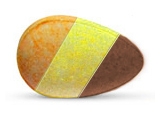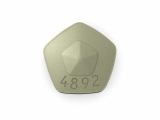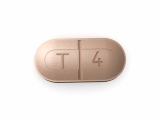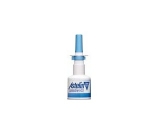Erectile function restored after turp
TURP (Transurethral Resection of the Prostate) is a minimally invasive surgical procedure that is used to treat a variety of prostate problems in men. While it is primarily used to alleviate symptoms associated with an enlarged prostate, recent studies have shown that TURP can also have significant benefits when it comes to improving erectile function.
Studies have shown that men who undergo TURP experience a significant improvement in their ability to achieve and maintain an erection. This is due to the fact that TURP can help to relieve pressure on the nerves and blood vessels responsible for erectile function.
In addition to improved erectile function, TURP has also been shown to have a range of other benefits. For example, it can help to reduce urinary problems such as incontinence and urgency, and can also improve overall quality of life by reducing pain and discomfort caused by an enlarged prostate.
If you are experiencing prostate problems and are concerned about the impact that it may have on your sexual function, it may be worth considering TURP as a treatment option. Talk to your doctor today to learn more about the benefits and risks of this procedure and whether it may be right for you.
What is TURP?
TURP stands for Transurethral Resection of the Prostate
TURP is a surgical procedure used to treat urinary problems caused by an enlarged prostate. During the procedure, a small instrument called a resectoscope is inserted into the urethra to remove excess tissue from the prostate gland.
Benefits of TURP
TURP can improve urine flow, reduce the need for frequent urination, and decrease the risk of urinary tract infections. It has also been shown to improve erectile function in some men.
- Improved urine flow
- Reduced need for frequent urination
- Decreased risk of urinary tract infections
- Possible improvement in erectile function
If you are experiencing urinary problems due to an enlarged prostate, TURP may be a viable option to explore with your doctor.
How TURP Works
The Procedure
TURP, or transurethral resection of the prostate, is a surgical procedure that involves removing part of the prostate gland. It is performed under general anesthesia using a special instrument called a resectoscope. The resectoscope is inserted into the penis and through the urethra to reach the prostate gland.
Once the resectoscope is in place, a wire loop is used to remove small pieces of the prostate tissue. This process continues until enough tissue has been removed to restore normal urine flow.
The Benefits
The benefits of TURP are many. For starters, the procedure can help restore erectile function in men who have had difficulty with it due to an enlarged prostate. By removing the excess tissue, the prostate gland is relieved of pressure, and blood flow to the penis can return to normal.
In addition to restoring erectile function, TURP can also help alleviate urinary symptoms such as a weak urine stream, frequent urination, and the need to urinate at night. This can improve a patient’s quality of life and overall health.
The Risks
Like any surgical procedure, TURP carries risks. These include bleeding, infection, and damage to surrounding organs. Patients may experience blood in their urine, difficulty urinating, or pain during urination in the days following the procedure.
The Recovery
Most patients require a hospital stay of one to three days following the procedure. During this time, they may be catheterized to facilitate urine drainage. Patients are advised to abstain from sexual activity for a period of time following the procedure to allow the prostate gland to heal.
While recovery time can vary, most patients can return to their normal activities within four to six weeks. Regular follow-up appointments with a healthcare provider are important to monitor urine flow and overall prostate health.
In conclusion, TURP is an effective treatment option for men suffering from an enlarged prostate. While the procedure carries risks, the benefits of restored erectile function and improved urinary symptoms make it a worthwhile consideration. As with any medical decision, patients should consult with their healthcare provider to determine if TURP is the right choice for them.
Benefits of TURP
Improved Urinary Symptoms
TURP, or Transurethral Resection of the Prostate, is a surgery commonly used to treat an enlarged prostate. The procedure involves removing parts of the prostate gland that are blocking the flow of urine through the urethra. By doing so, patients typically experience an improvement in their urinary symptoms, such as increased urine flow, reduced urgency and frequency, and decreased nighttime urination.
Restored Sexual Function
Many patients with an enlarged prostate also experience erectile dysfunction, or the inability to achieve or maintain an erection. This is due to the pressure on the nerves and blood vessels that regulate sexual function. TURP may help to restore sexual function by relieving this pressure and improving blood flow to the penis.
Reduced Risk of Related Health Problems
An enlarged prostate can lead to other health problems, such as urinary tract infections and bladder stones. TURP can reduce the risk of these complications and improve overall urinary and sexual health. It may also reduce the risk of prostate cancer, as detection and treatment are easier when the prostate is a normal size.
Fast Recovery Time
TURP is typically performed as an outpatient procedure or with a short hospital stay. Recovery time is relatively fast, with most patients experiencing a return to normal activities within a few weeks of the surgery.
- Improved urinary symptoms
- Restored sexual function
- Reduced risk of related health problems
- Fast recovery time
Conclusion
TURP offers many benefits for men suffering from an enlarged prostate. Patients can experience an improvement in urinary symptoms, restored sexual function, a reduced risk of related health problems, and a fast recovery time. Consult with a healthcare provider to determine if TURP is the right treatment option for you.
Who Can Benefit from TURP?
Men with Benign Prostatic Hyperplasia (BPH)
If you are a man suffering from symptoms of BPH, such as frequent urination, difficulty urinating, or weak urine flow, TURP may be the solution you have been looking for. TURP is a minimally invasive surgical procedure that can effectively relieve BPH symptoms by removing excess prostate tissue that is causing the blockage.
Men with Erectile Dysfunction (ED)
Studies have shown that TURP can also be beneficial for men with ED. By removing the excess prostate tissue that is causing urinary symptoms, TURP can improve blood flow to the penis and restore erectile function in some men. This can lead to improved sexual performance and a better overall quality of life.
Men who Cannot Take Medications for BPH
If you are unable to take medications for BPH due to side effects or other health conditions, TURP may be a viable alternative. Unlike medication, which may take weeks or months to relieve symptoms, TURP typically provides immediate relief and can significantly improve urinary function.
Overall, TURP is a safe and effective treatment option for men with BPH who are looking to improve their urinary function and quality of life. If you are interested in learning more about TURP and whether it may be right for you, talk to your healthcare provider today.
Risks and Side Effects of TURP
Common Risks
Although transurethral resection of the prostate has been proven to be a safe and effective treatment for benign prostatic hyperplasia (BPH), like any surgical procedure, TURP does come with some risks.
- Bleeding: During the procedure, there is a risk of bleeding that can be severe, requiring blood transfusions or additional surgery to address.
- Infection: Any time a patient undergoes surgery, there is a risk of infection. Antibiotics may be given before, during, and after the procedure to prevent infection.
- Urinary incontinence: There is a risk of temporary or permanent urinary incontinence, which can be a serious complication and require additional treatment.
Less Common Risks
In addition to the common risks above, there are some less common but potentially serious risks associated with TURP.
- Bladder neck contracture: This is when scar tissue forms around the urethra, narrowing or completely blocking urine flow.
- Ejaculation problems: Men may experience retrograde ejaculation, where semen is expelled into the bladder instead of out the penis.
- Urethral stricture: Scar tissue can form inside the urethra, making it difficult or impossible to urinate.
Recovery and Follow-Up Care
After TURP, patients should expect to stay in the hospital for a day or two to recover before being discharged. Follow-up care and monitoring are important to ensure proper healing and recovery.
- The patient may need to wear a catheter for a few days to help drain urine from the bladder.
- Pain medication may be prescribed to manage any discomfort.
- Strenuous activity and sexual activity should be avoided for a few weeks to allow the prostate and urethra to heal.
Follow us on Twitter @Pharmaceuticals #Pharmacy
Subscribe on YouTube @PharmaceuticalsYouTube





Be the first to comment on "Erectile function restored after turp"